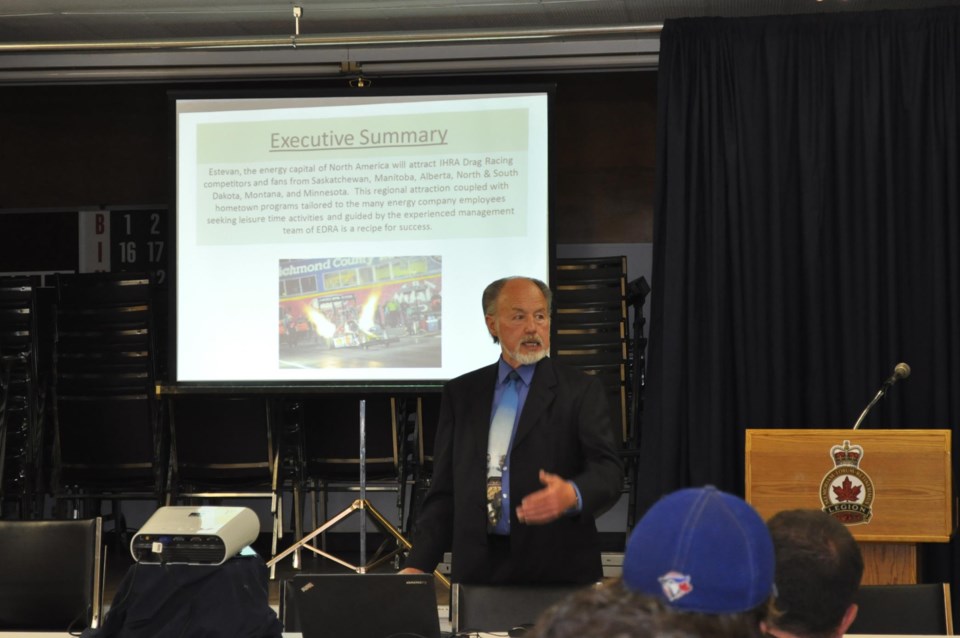If all goes according to plan, there are big things in the future of the Estevan Drag Racing Association.
On Friday, the same day they held a meeting to gather more information on the construction of a new track, the EDRA signed a contract with the International Hot Rod Association to become its 106th track as part of Division 6.
"That was just absolutely breathtaking to get that presented to us by the IHRA, having them willing to take us on as their 106th track. I'm very excited. It's going to do nothing but good for us and the community," said Dave Krahn, the EDRA's new president.
The IHRA is the second-largest drag racing governing body in North America. Estevan will be the ninth Canadian track to be sanctioned under its umbrella.
IHRA track development director Phil Gingerich was among the three presenters at Friday's meeting and explained the benefits of joining the circuit, in terms of added races and help with promotion and other areas.
New events that can be offered include the Summer Super Series, which sees each track winner compete in the Race of Champions for a chance to head to worlds; and the Ironman Classic, an event that can be held twice a year, with promotional help from the IHRA.
IHRA Division 6 director John Carnahan also made a presentation, outlining the economic spinoff of drag racing in his hometown of Malta, Mont., noting the benefits for the hotel, restaurant, bar and shopping sectors.
"He blew it out of the water," said EDRA secretary Jim Forrest. "He outlined what kind of money this can bring in. You think of a town of 1,000 people, and half a million dollars running five races (in a season) half a million dollars going into that little town."
Ron Colson of Track Planning Associates, who has been involved in designing and developing the track, spoke about the costs of the project.
The new track, to be located north of Estevan Motor Speedway, will cost an estimated $3,615,120 to build, divided into four stages.
The vast majority of that cost comes in the first stage, which totals $2,845,120, including just under $1.5 million to lay down the concrete track. The budget also includes $450,000 for basic excavation, $235,200 for pit roads and $208,320 for a return lane.
Stage 2 includes $195,000 for grandstands, maintenance equipment and a timing system. Stage 3 includes $185,000 for restrooms and more grandstands, among other things.
The fourth step, labelled as a "future stage," includes $390,000 being spent on lighting, fencing and more funds for grandstands.
Colson said he is optimistic about the project, noting that being in oil country means the EDRA could be an entertainment option for people here to work.
Colson projected growth rates of more than 200 per cent over the next five years, including 232 per cent for test and tune, 232 per cent for test and tune with a gamblers race, 245 per cent for bracket championships and 233 per cent for an annual pro show which would draw racers from all over Western Canada and the United States.
Colson said the EDRA "has the geographic location, experienced people and interest from IHRA's Division 6 to succeed."
An information package handed out at the meeting includes a detailed five-year financial plan, including projected income and expenses for each type of race for each year, accounting for estimated crowd growth.
The EDRA has put together various sponsorship packages and their next step is to begin raising funds.
"I'm coming out of this very optimistic. I think it helps give us direction to move ahead and go pound on those doors, talk to those sponsors, talk to people who can provide us services," said Forrest.
"I think this is going to create a groundswell of public support and our job is to get on it now and go after it. We've gotta sit down not only with the big players, but with the small players. Everybody can be a part of this."

